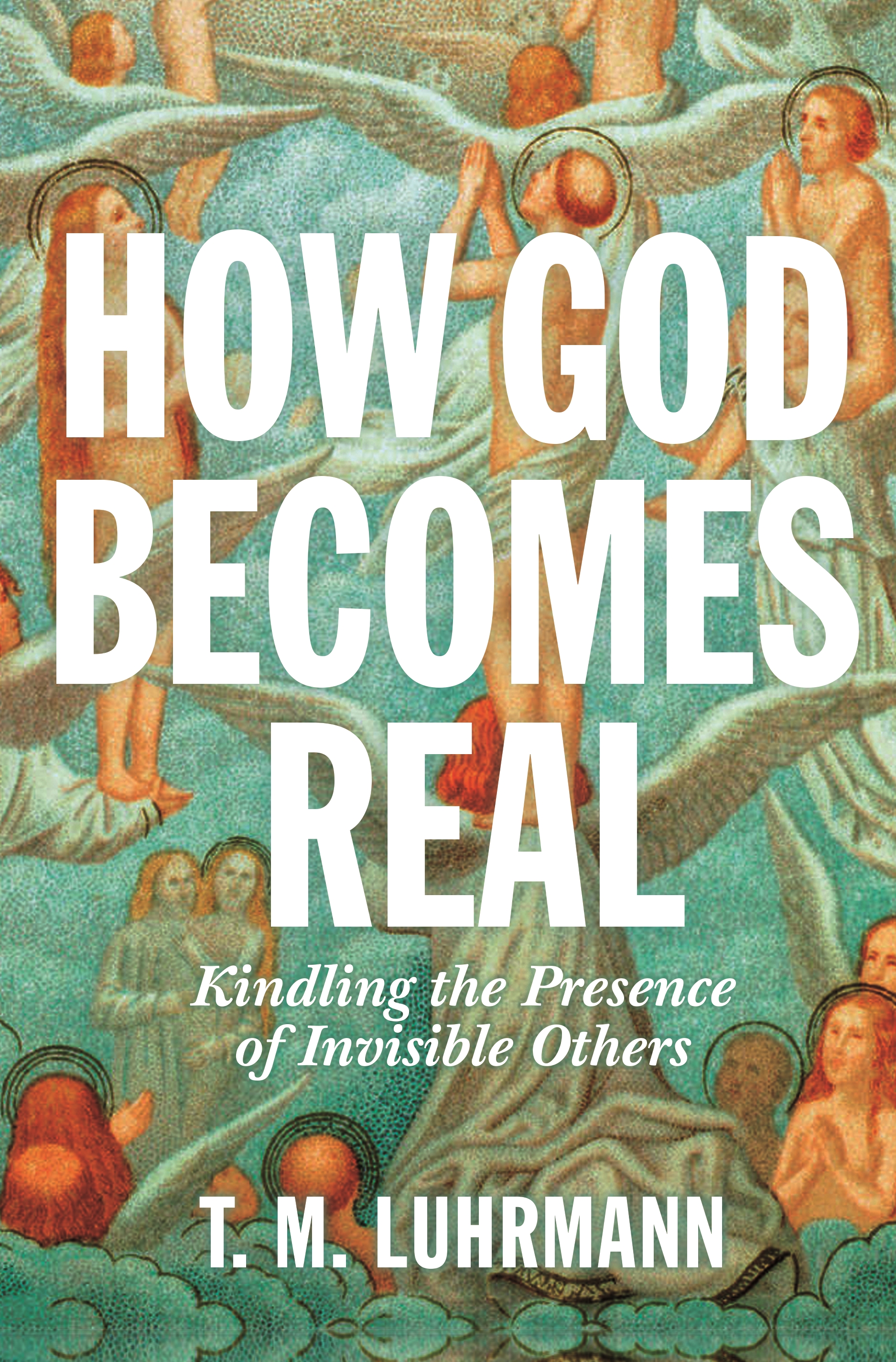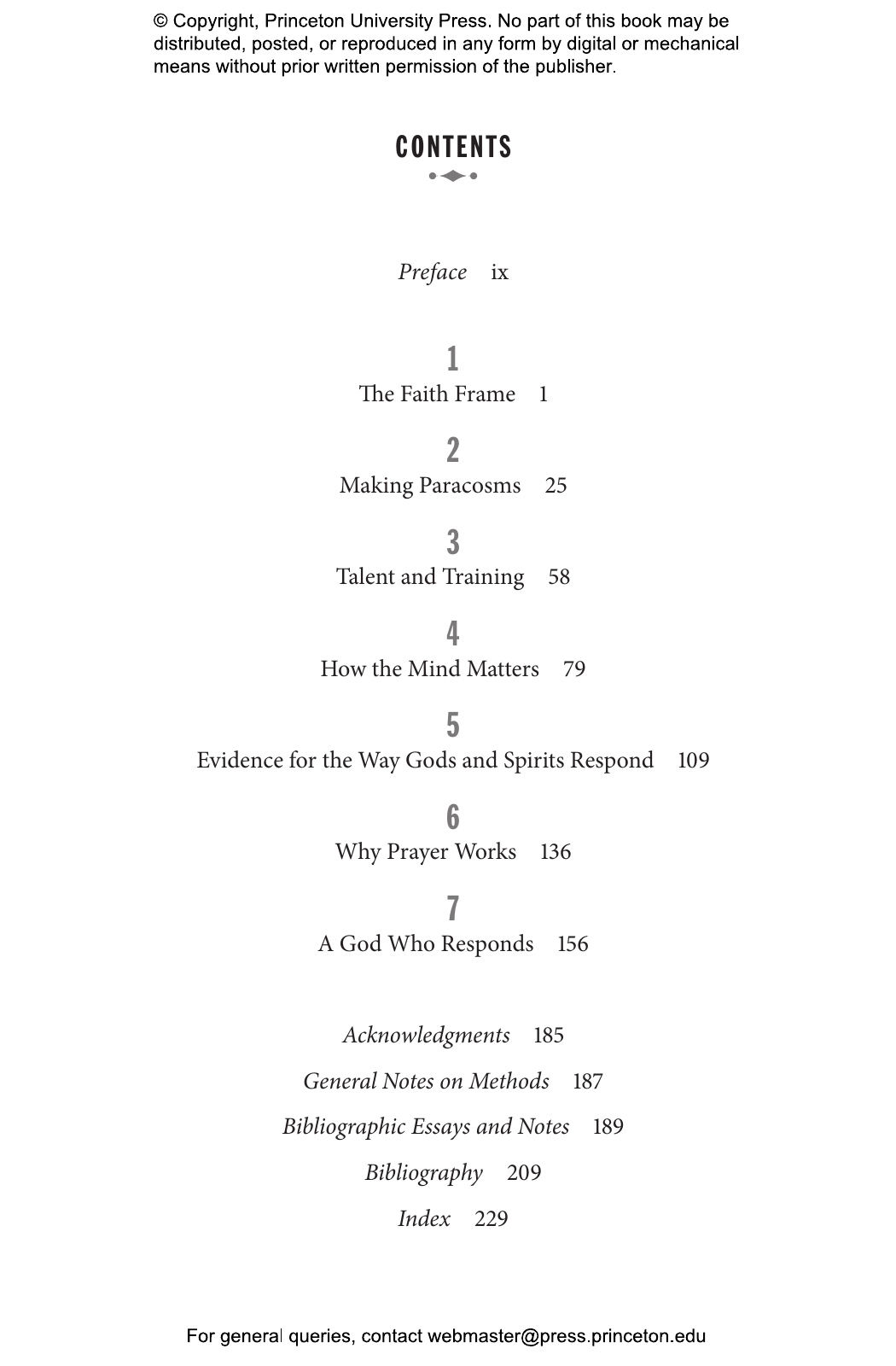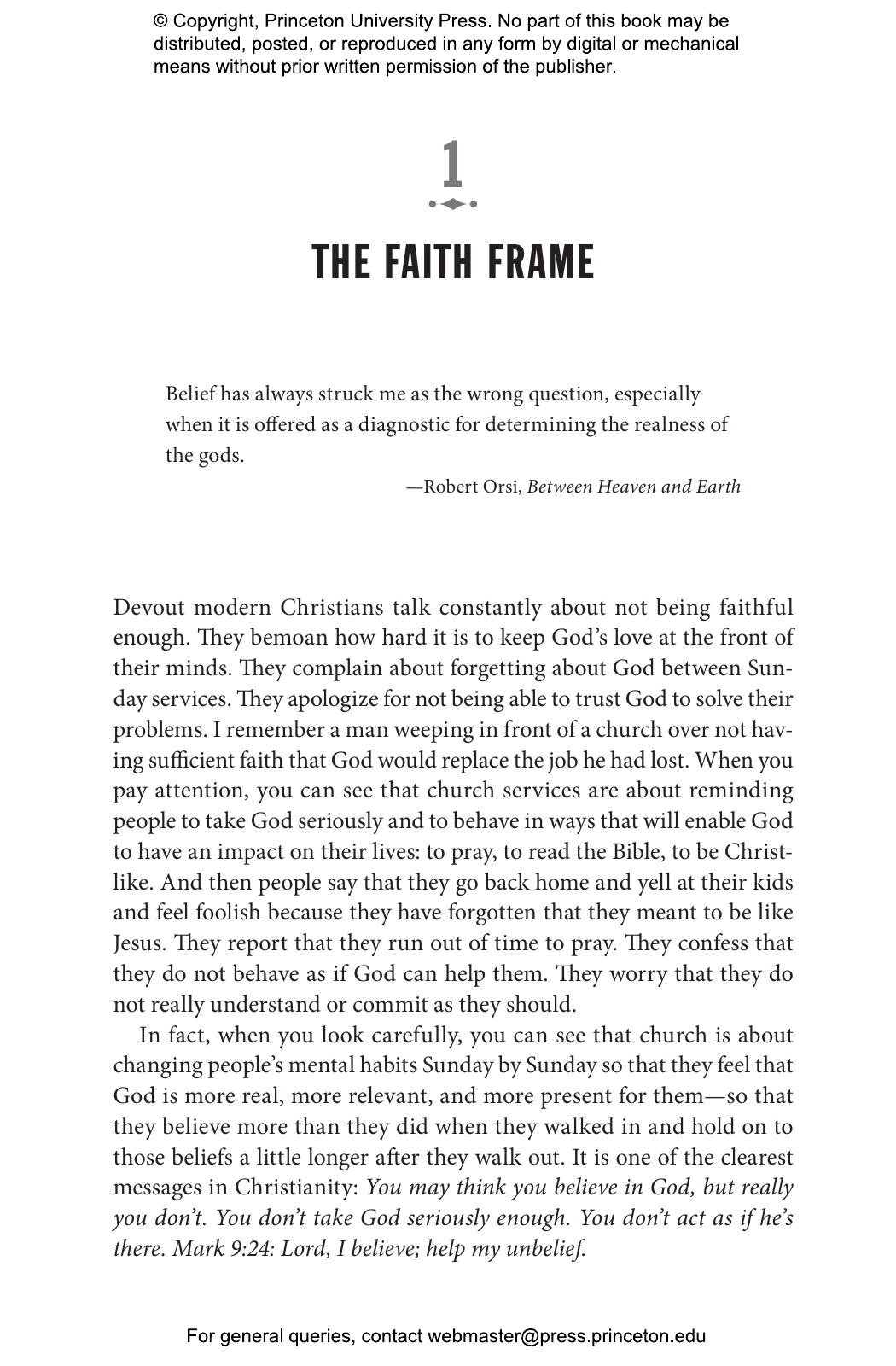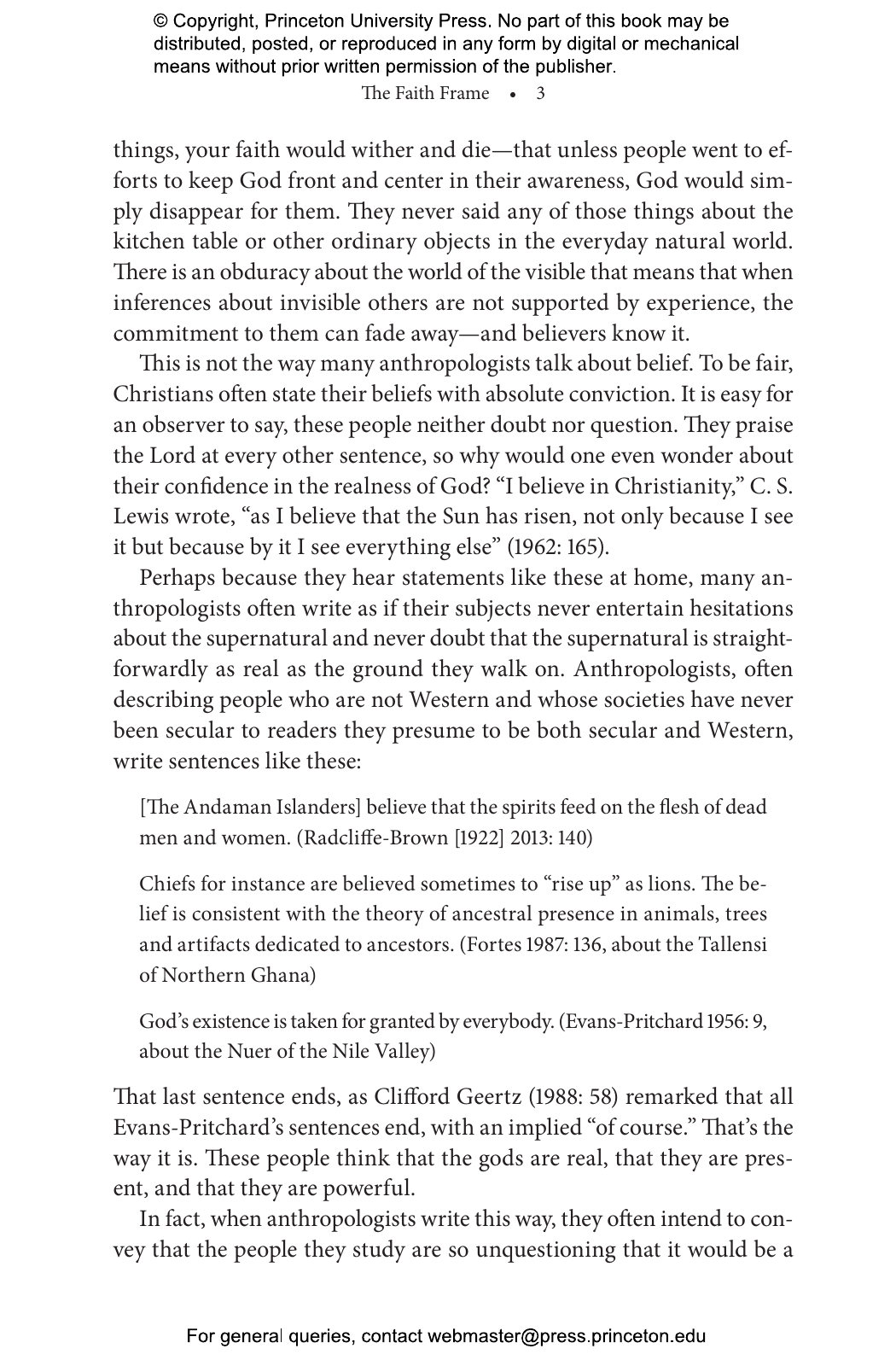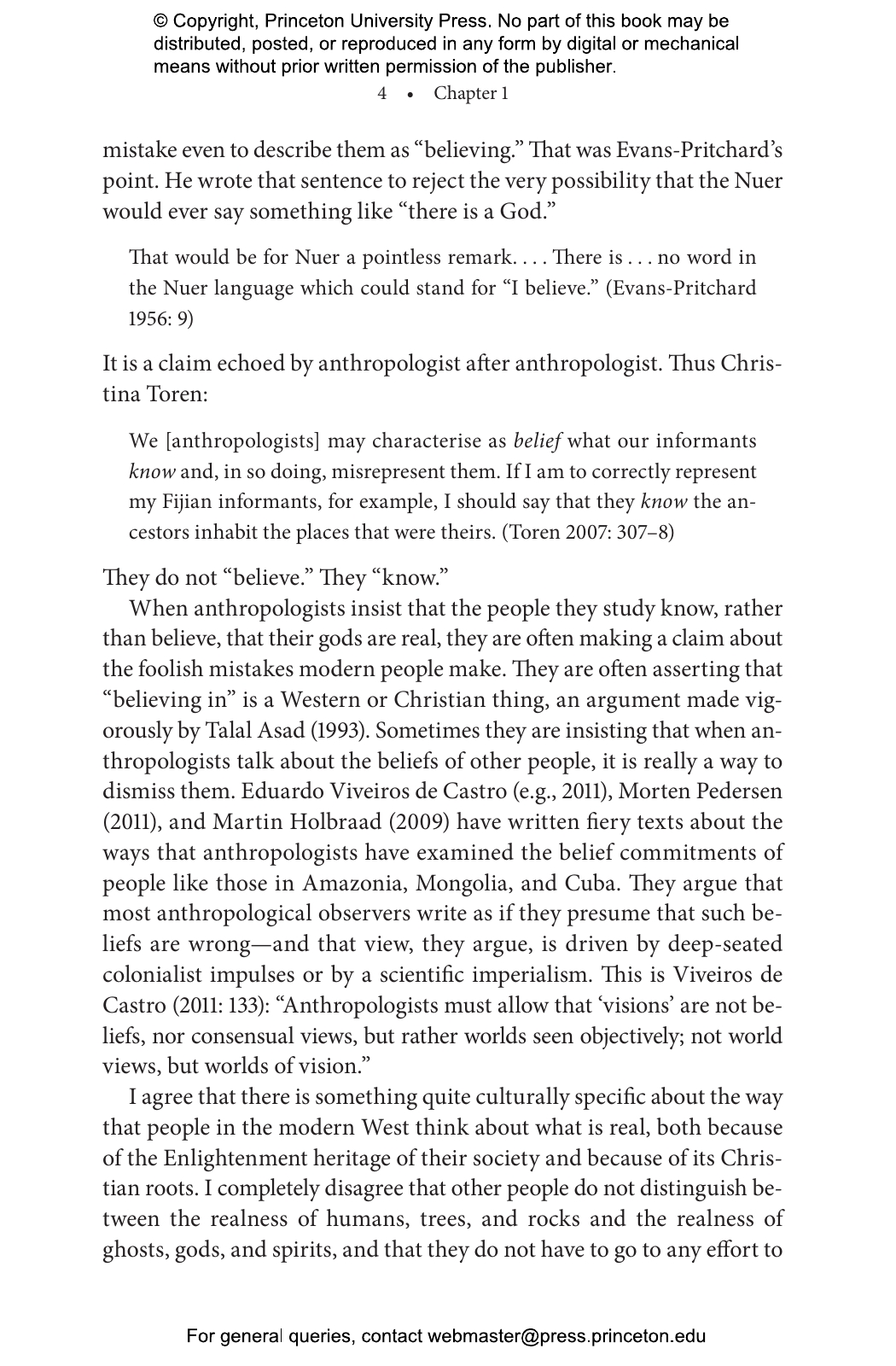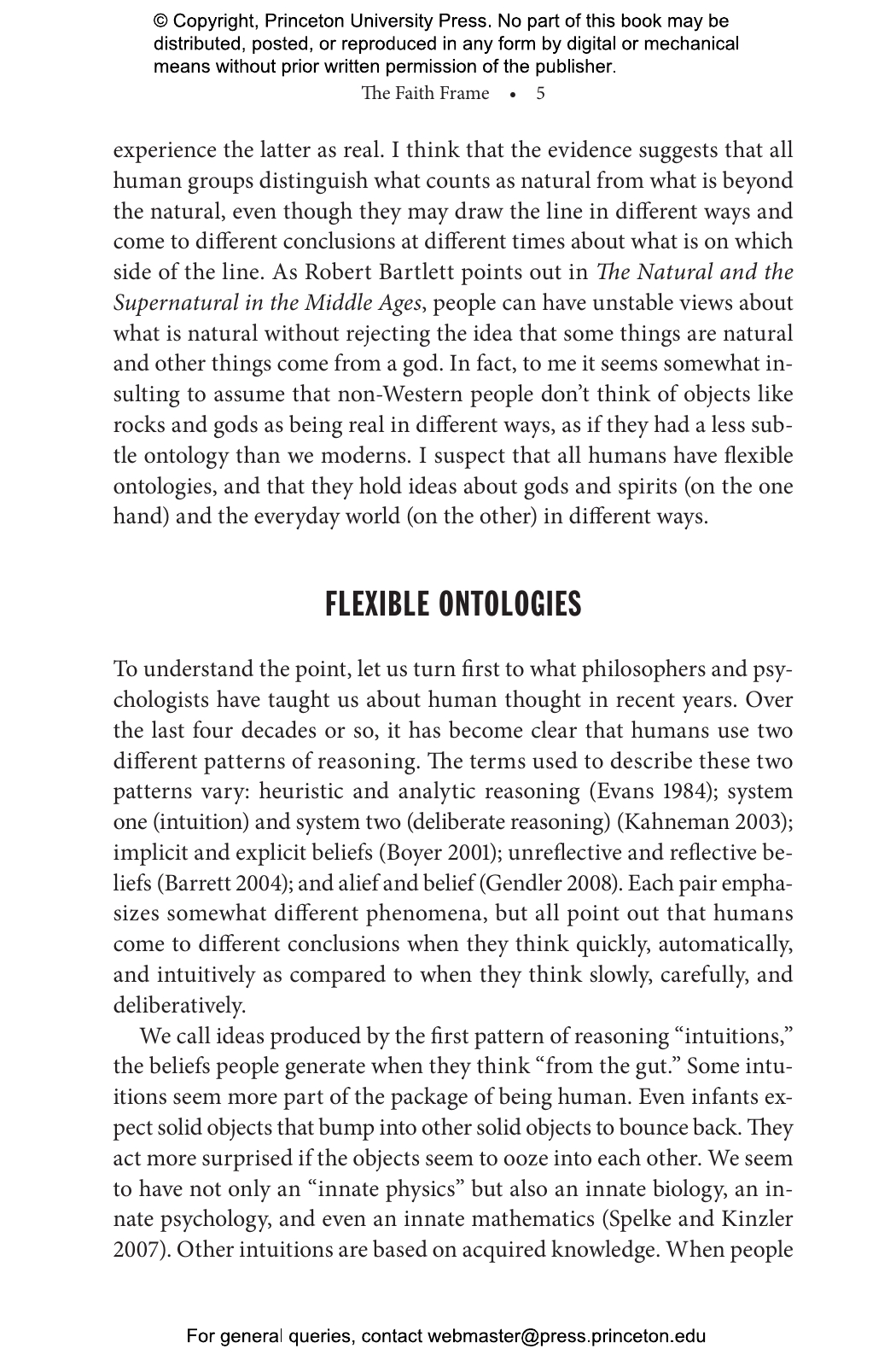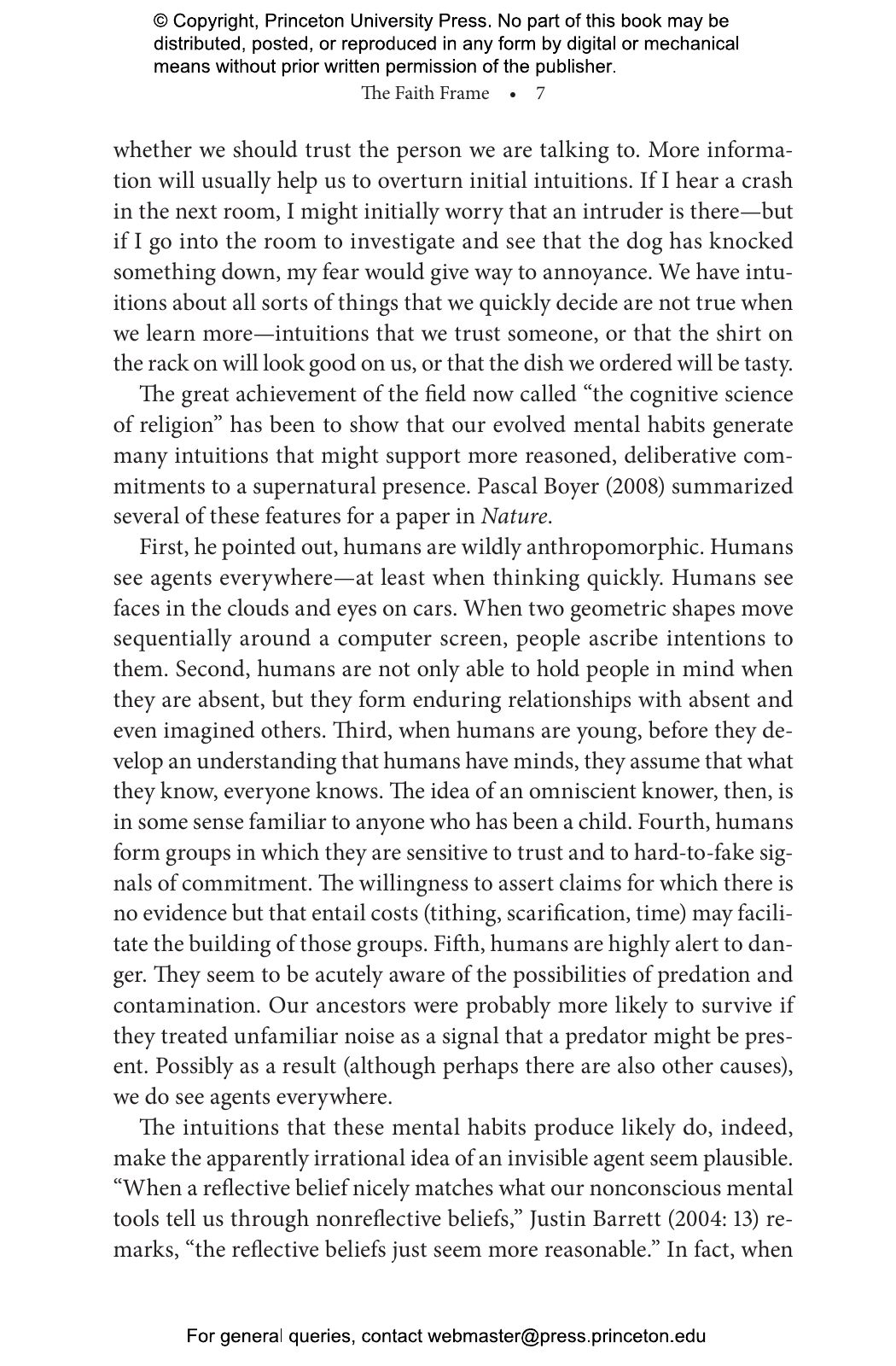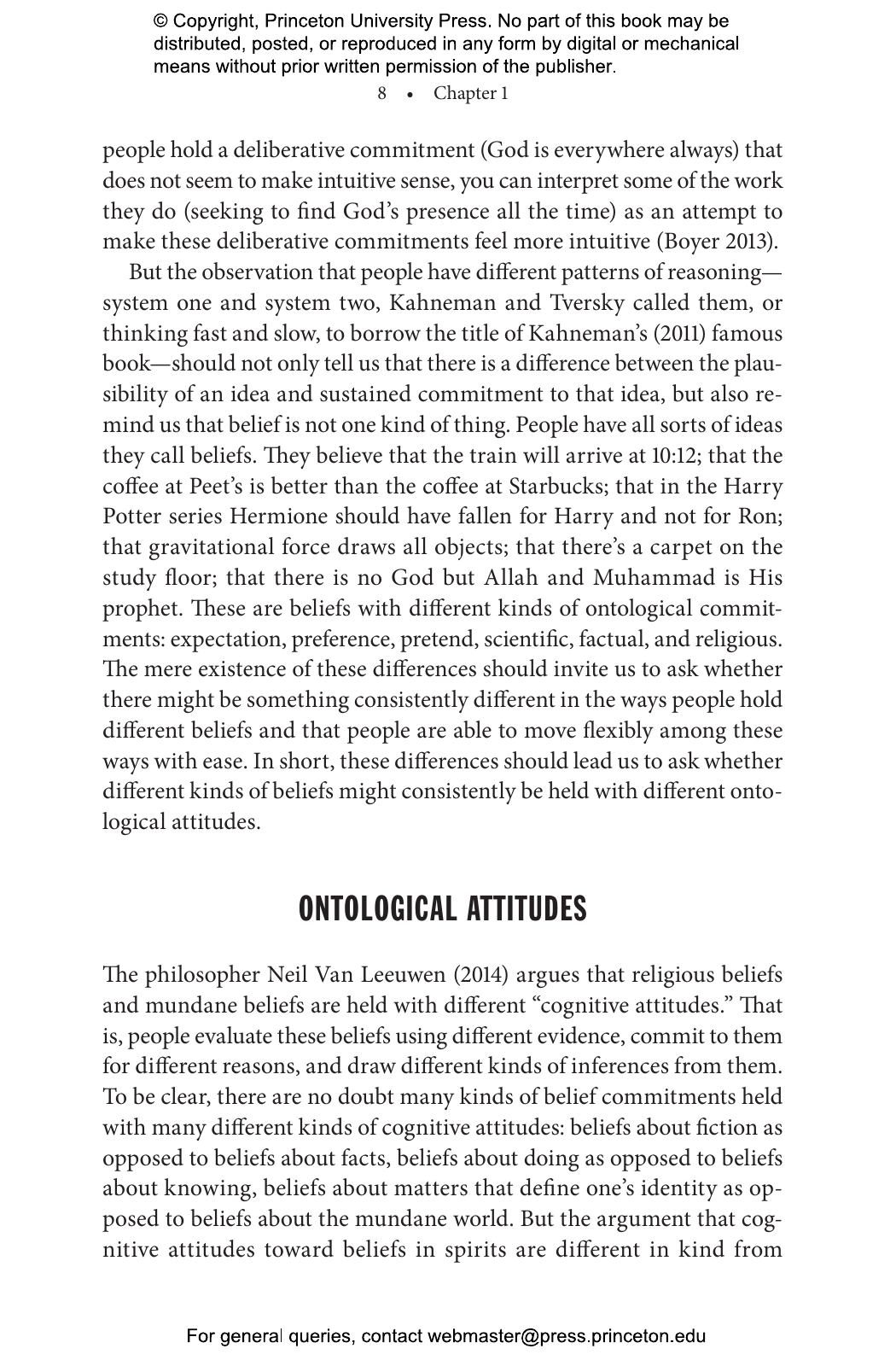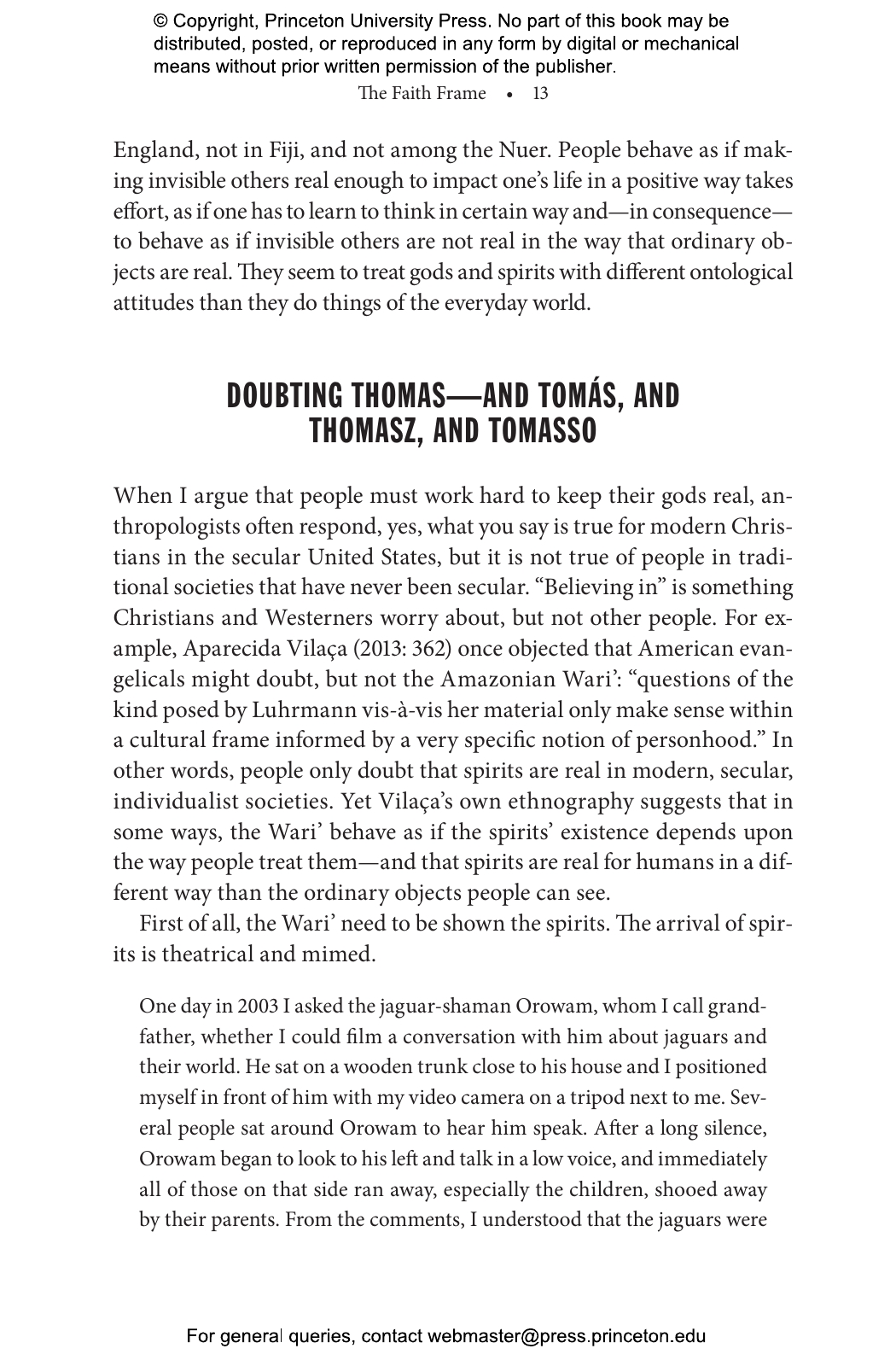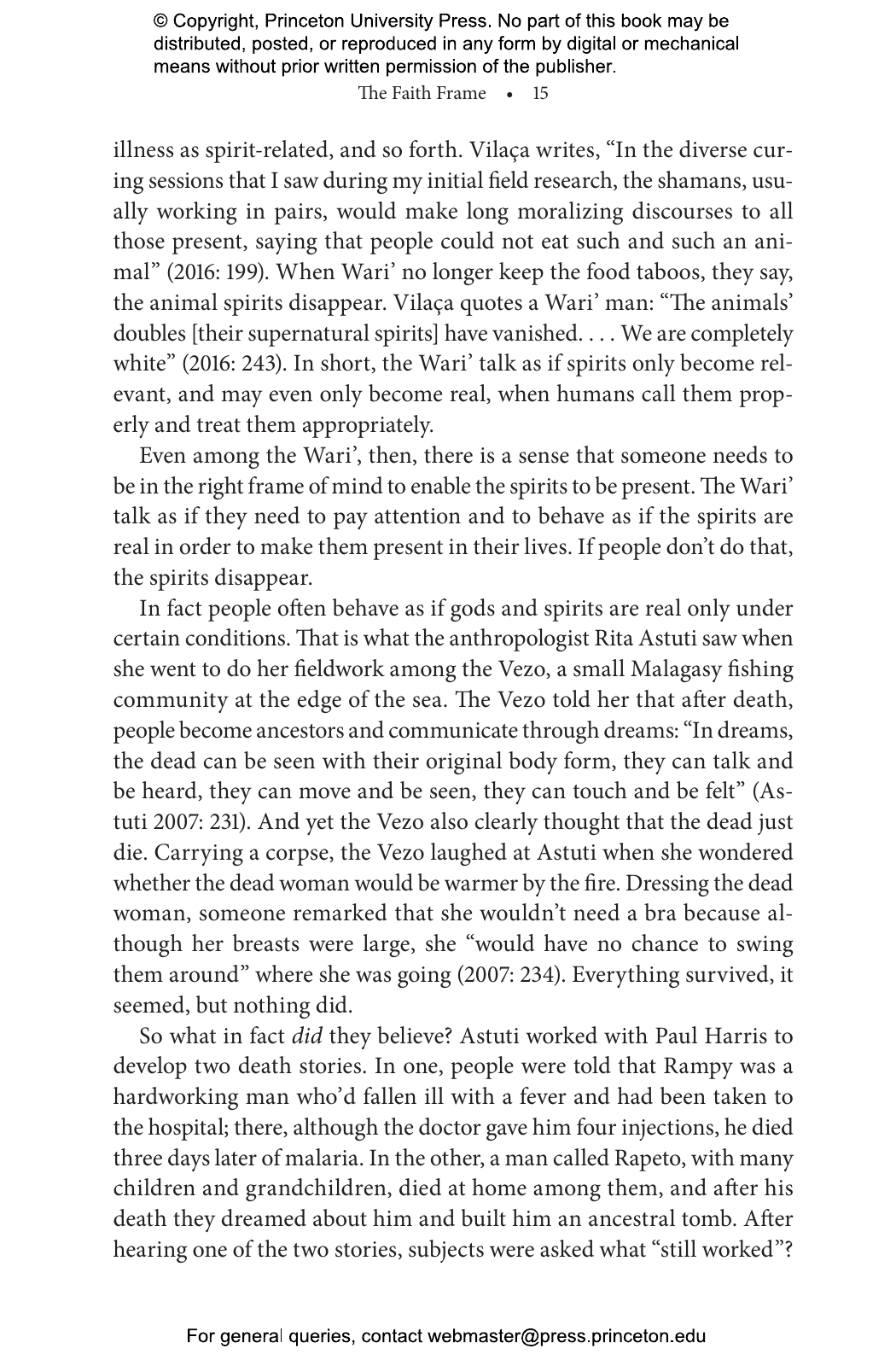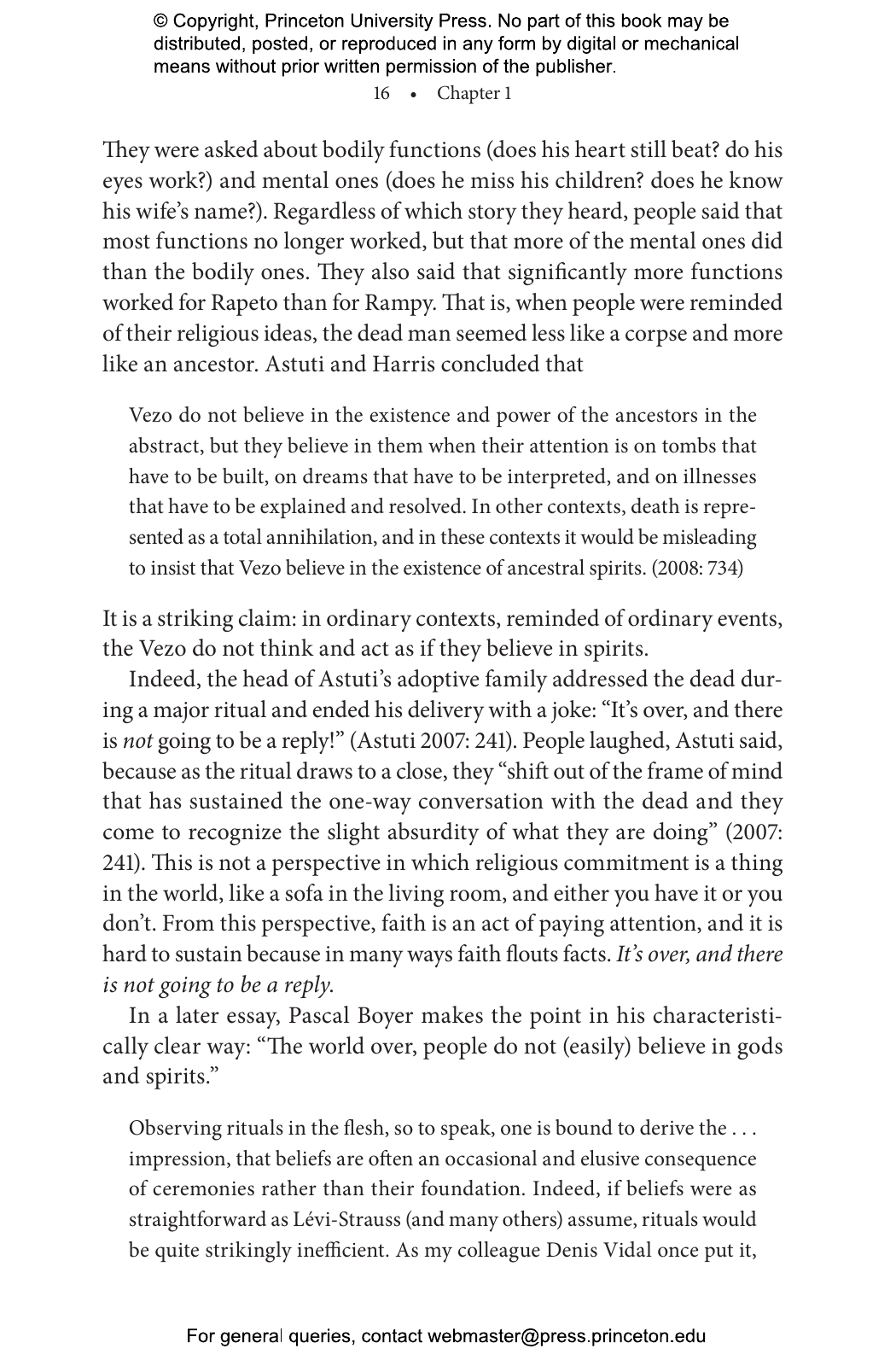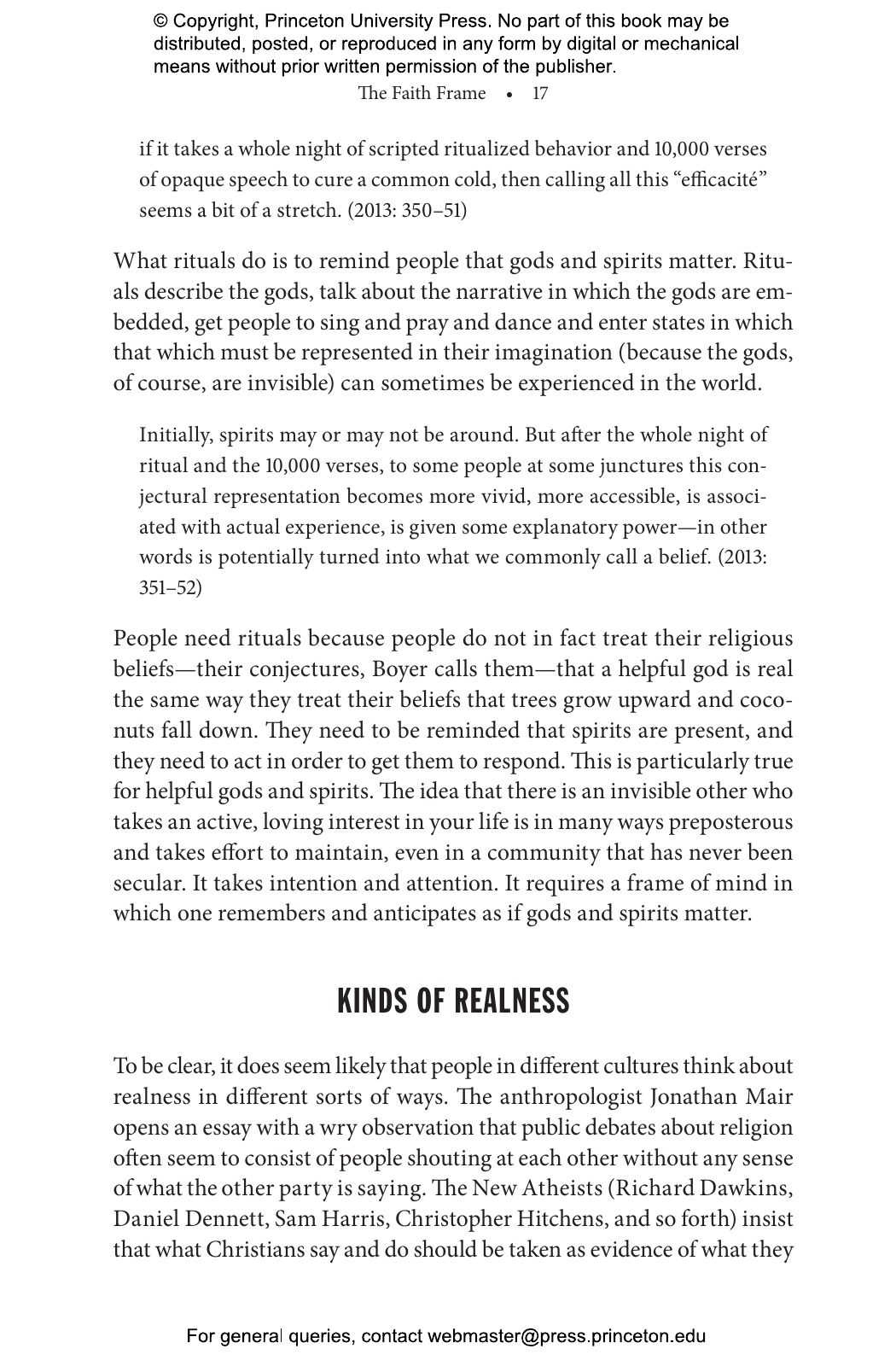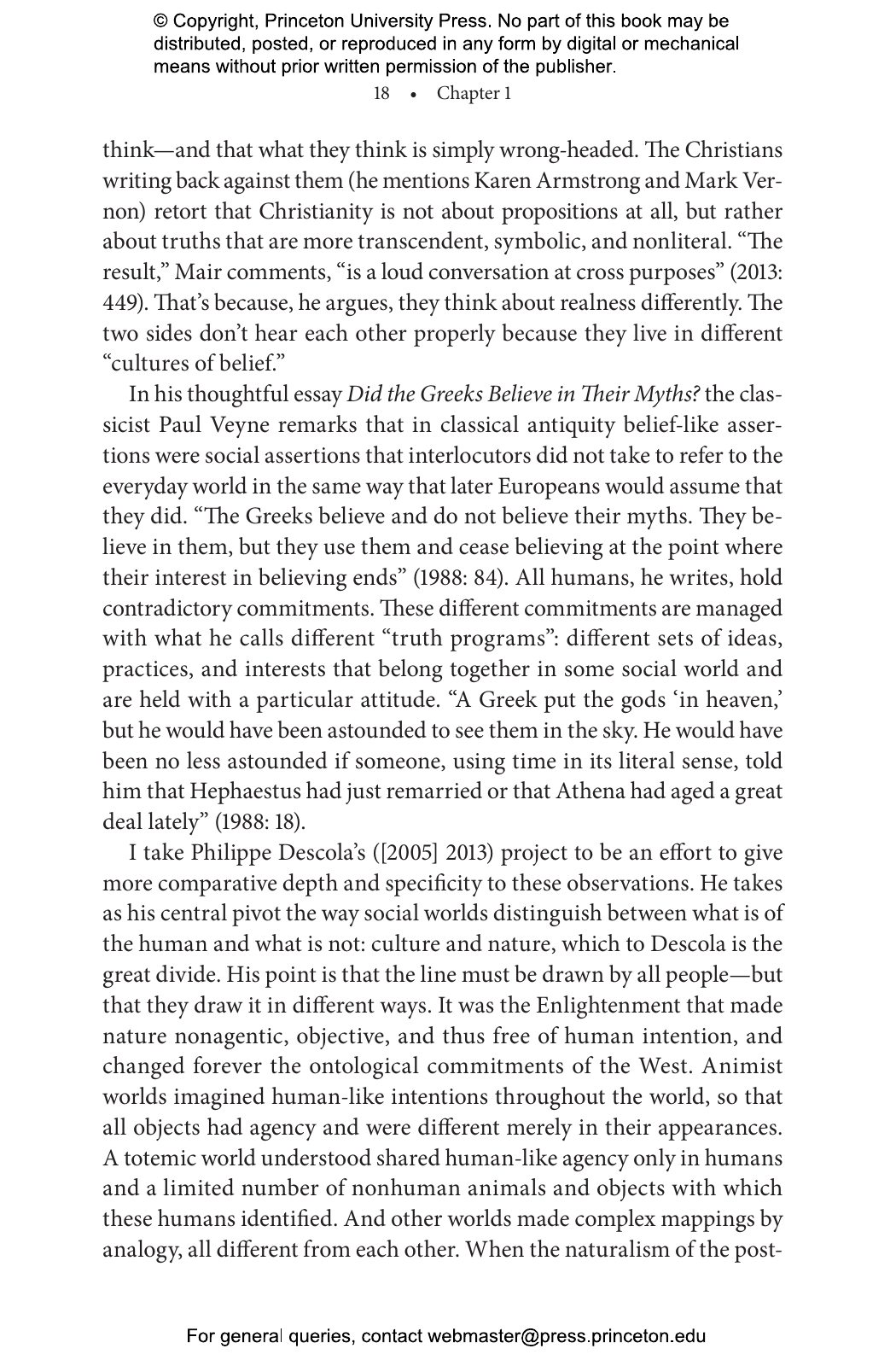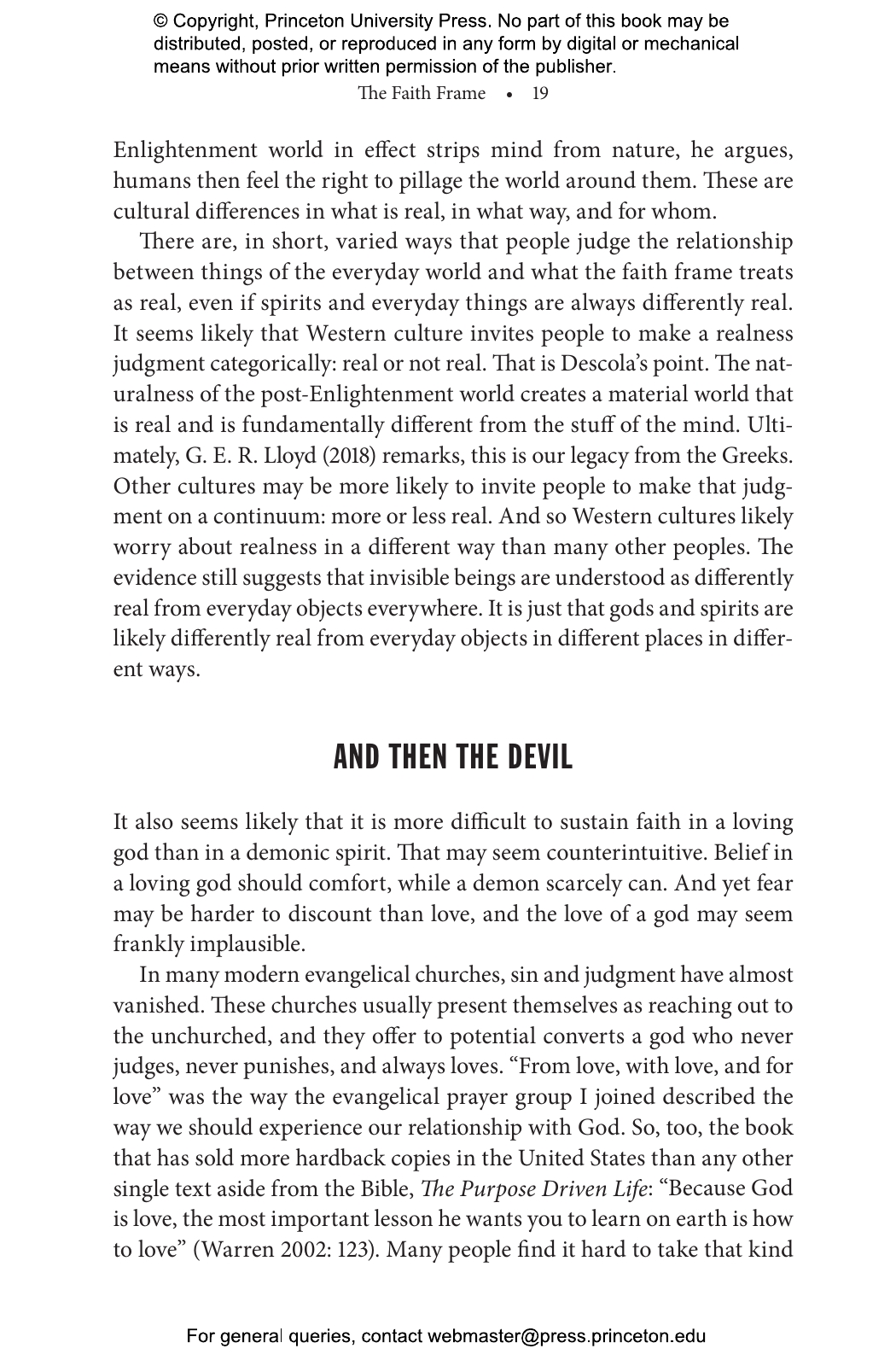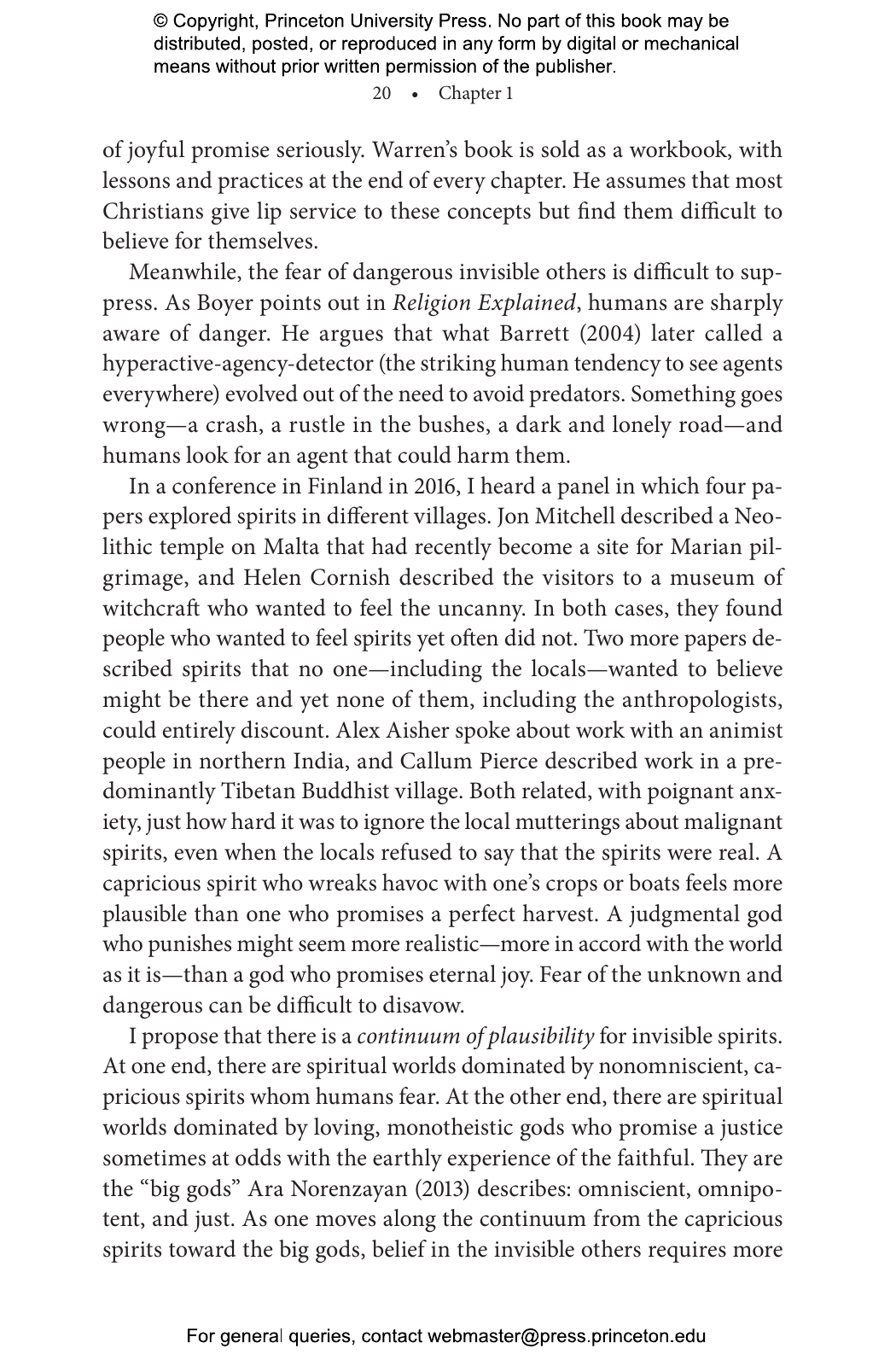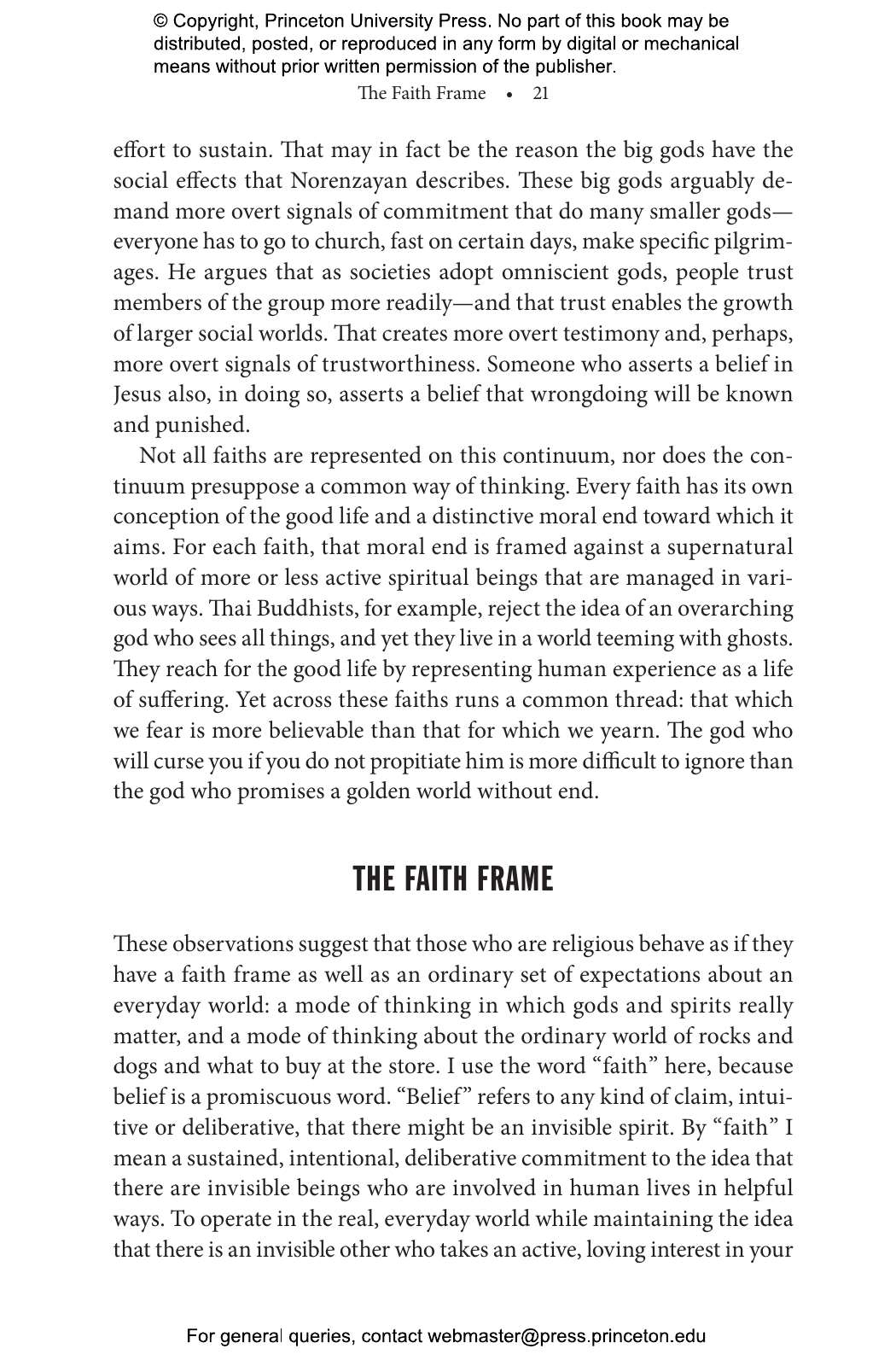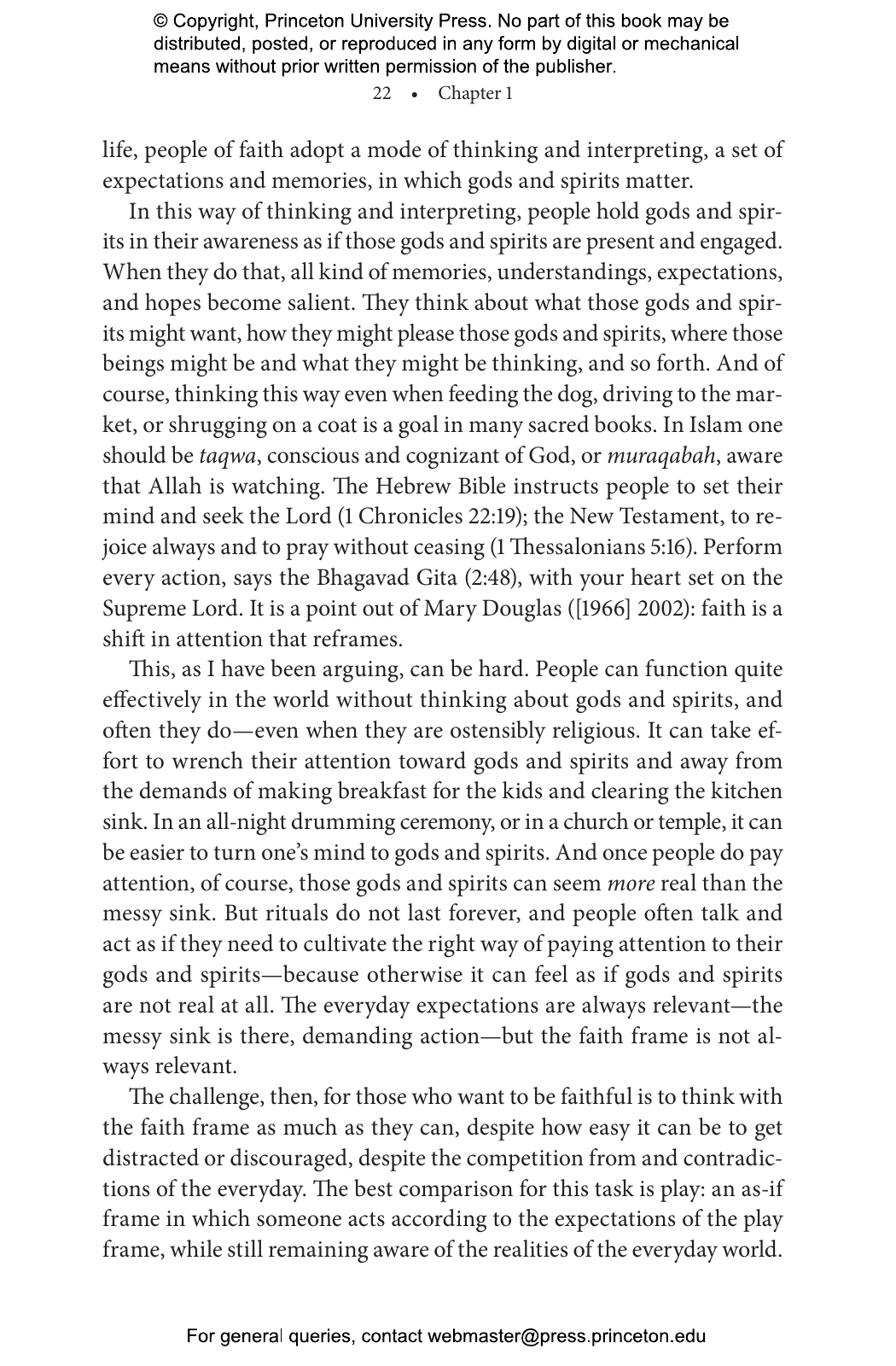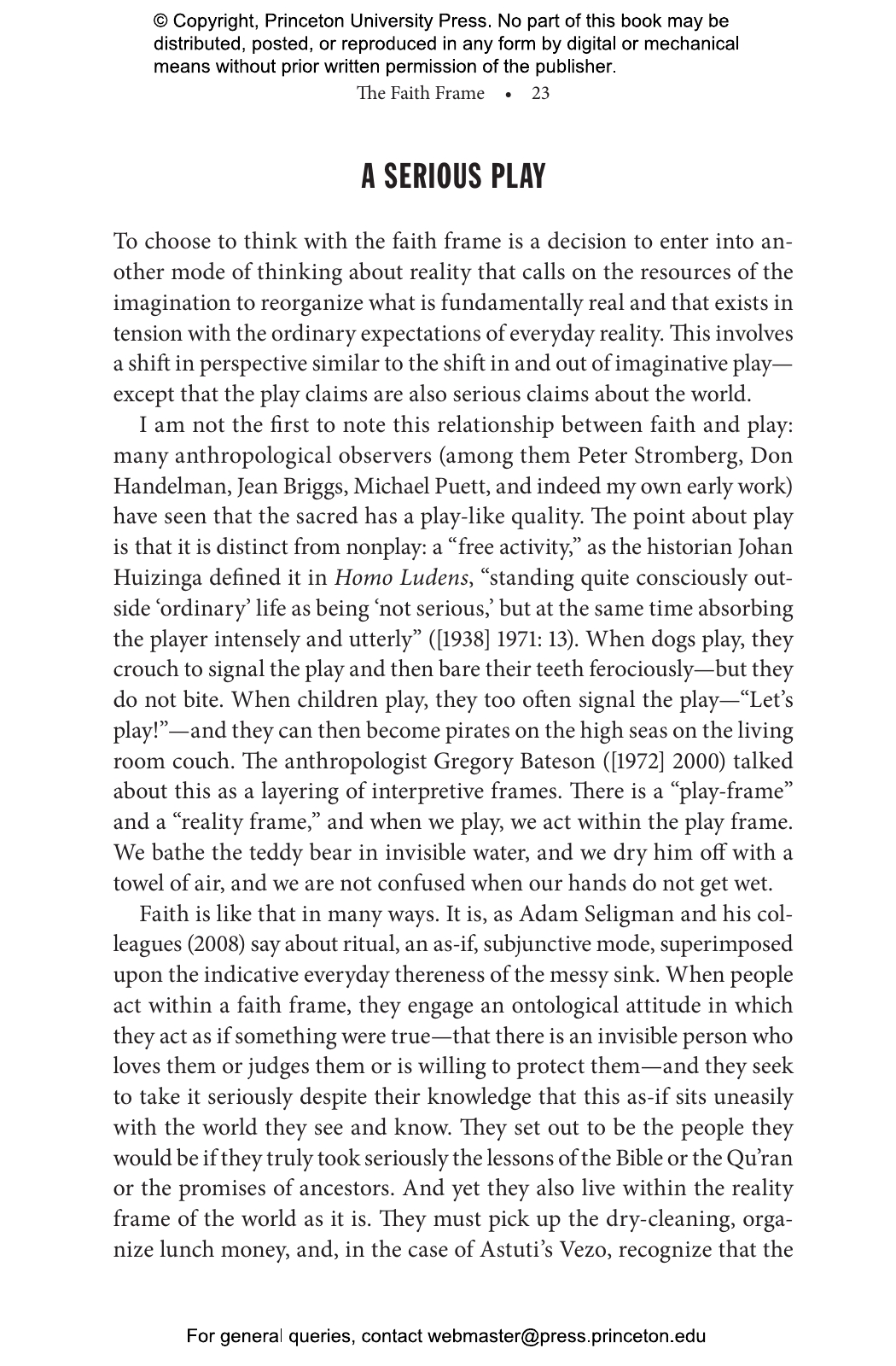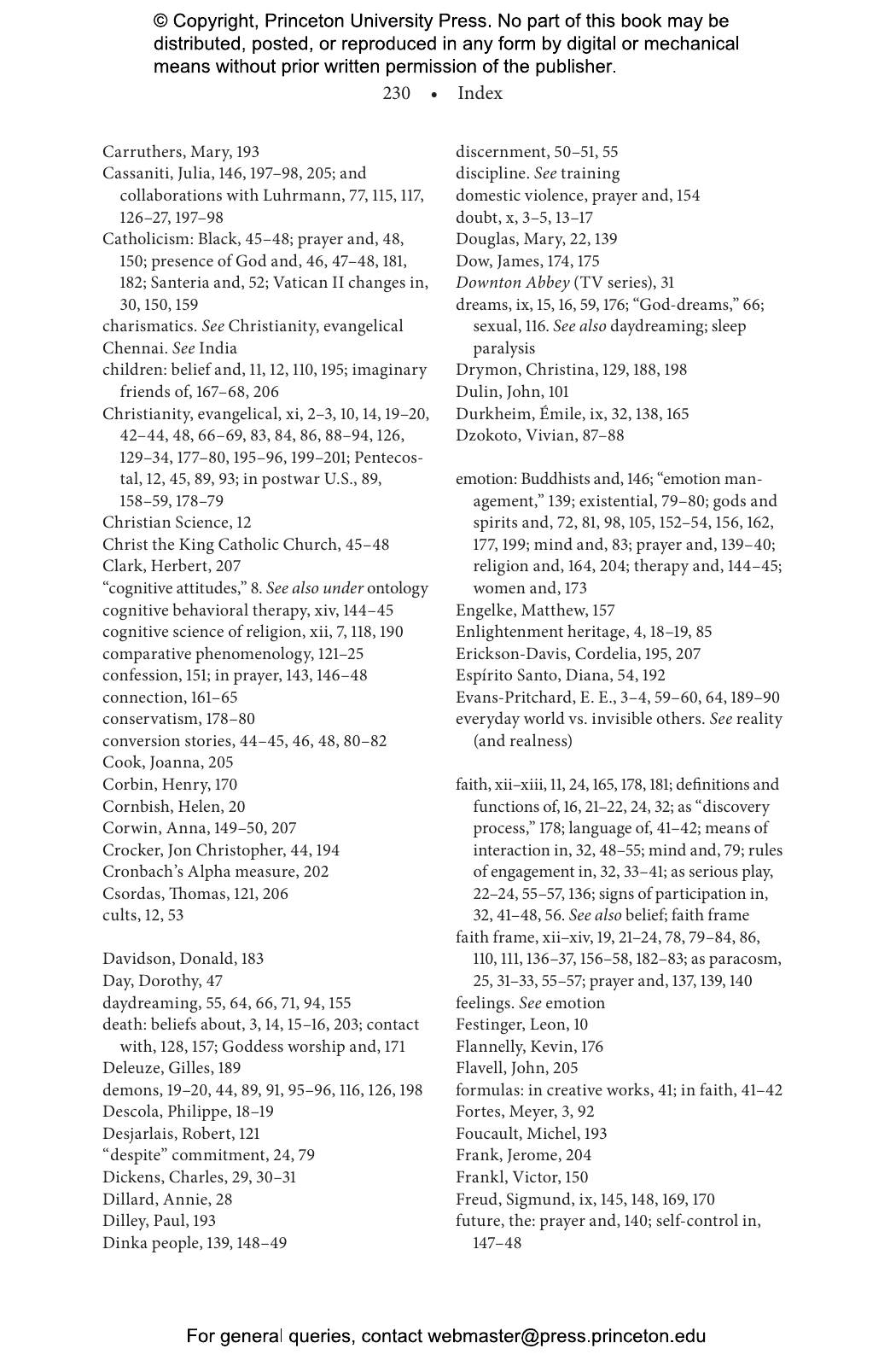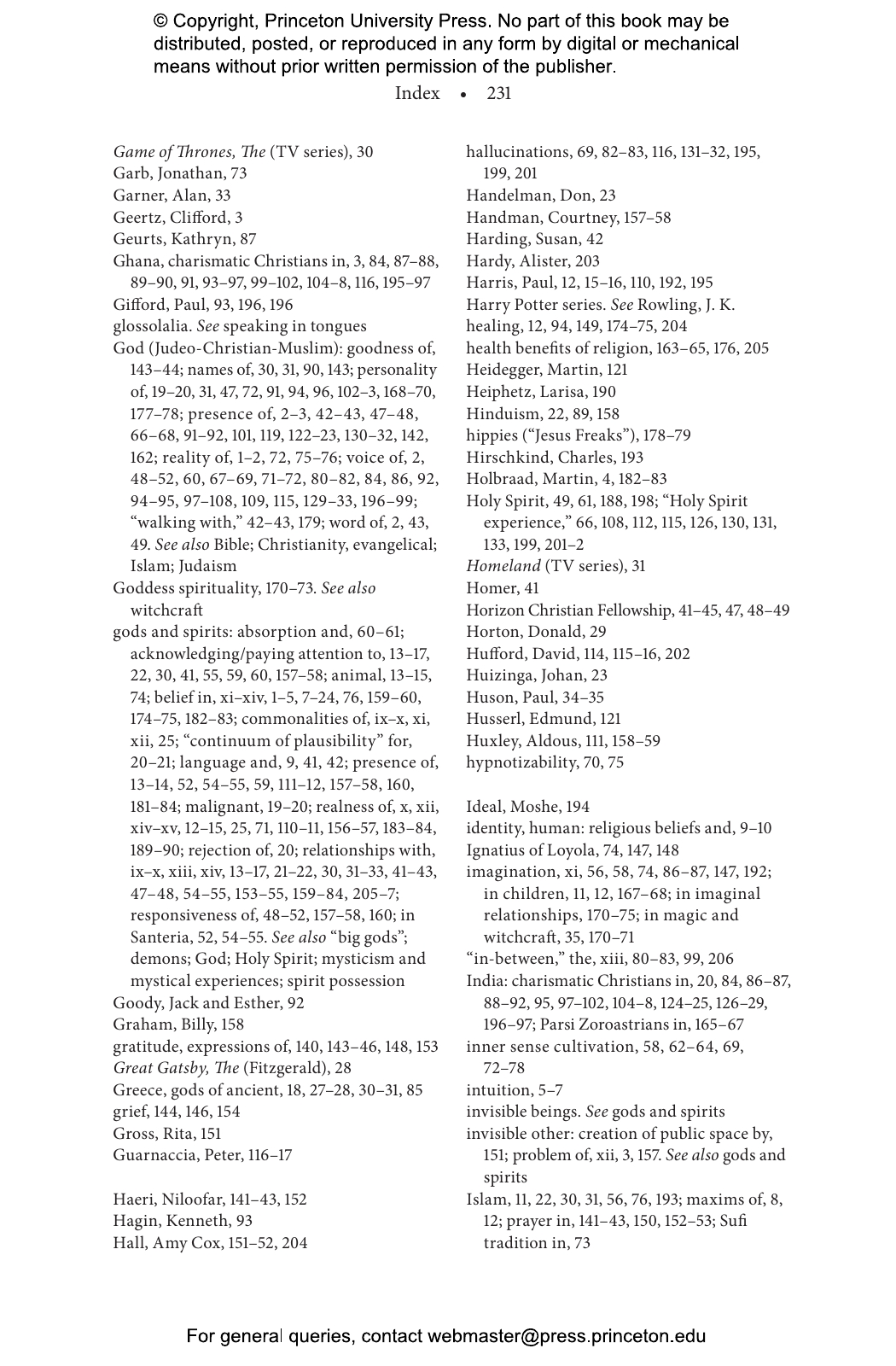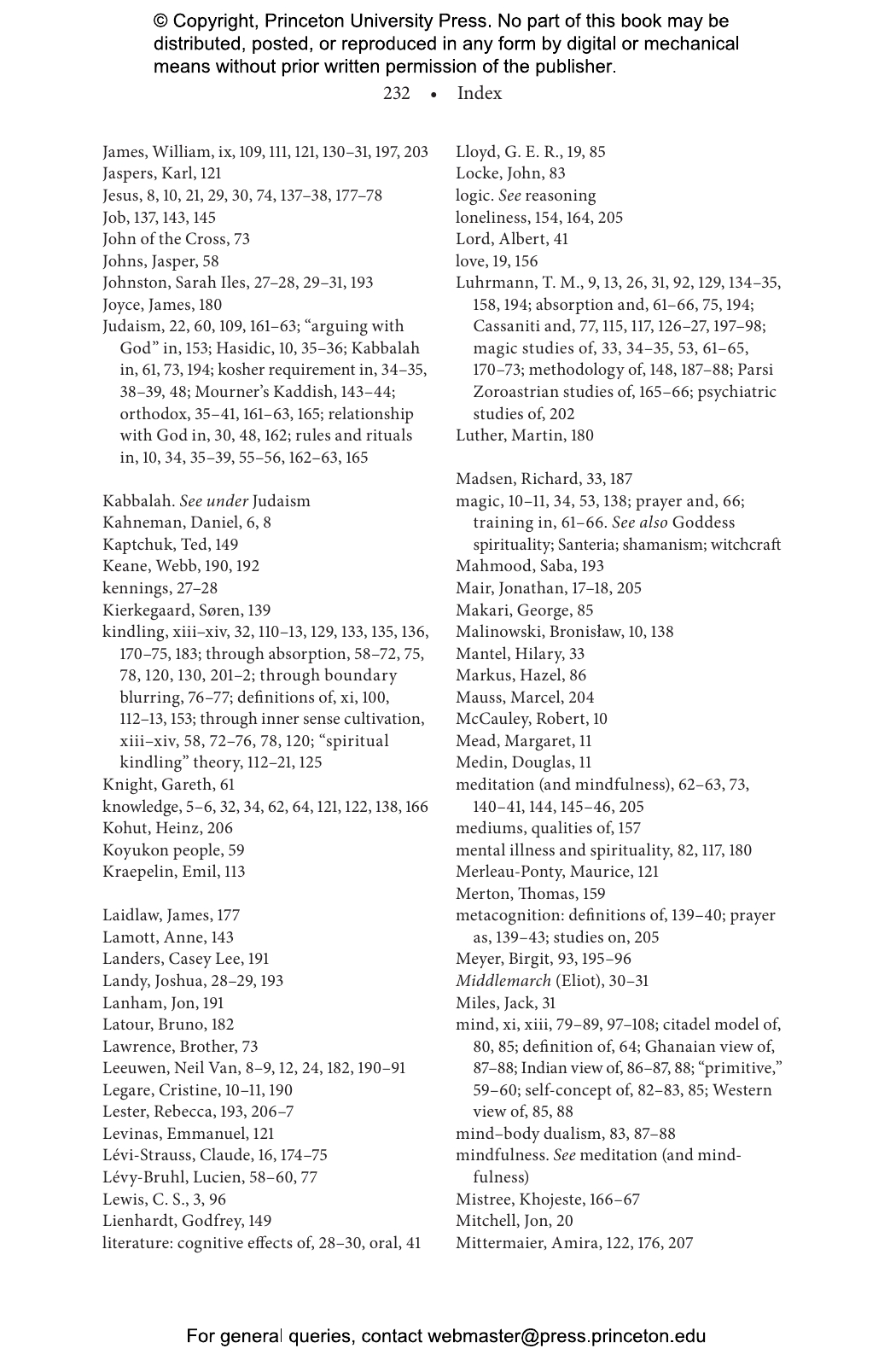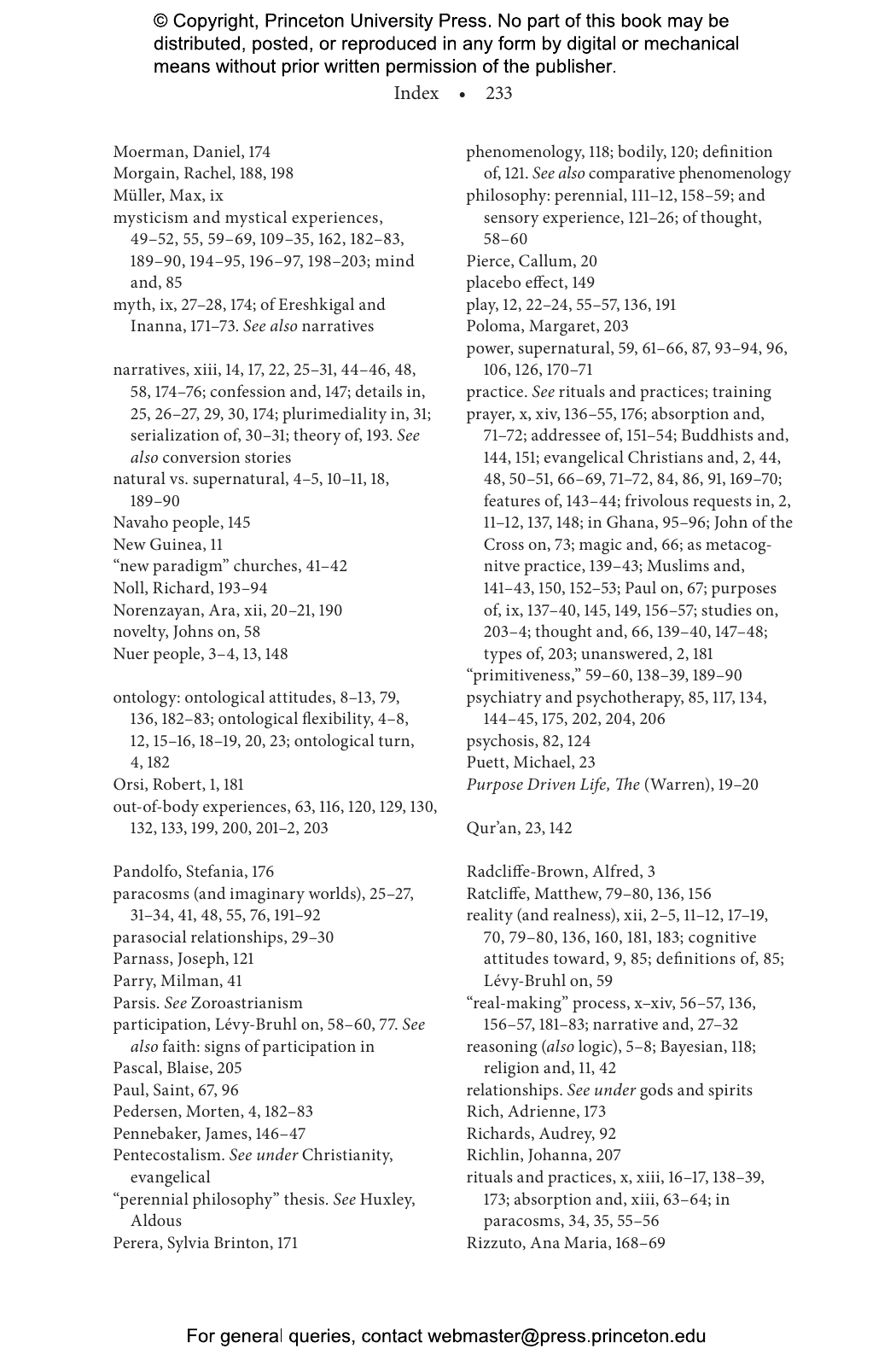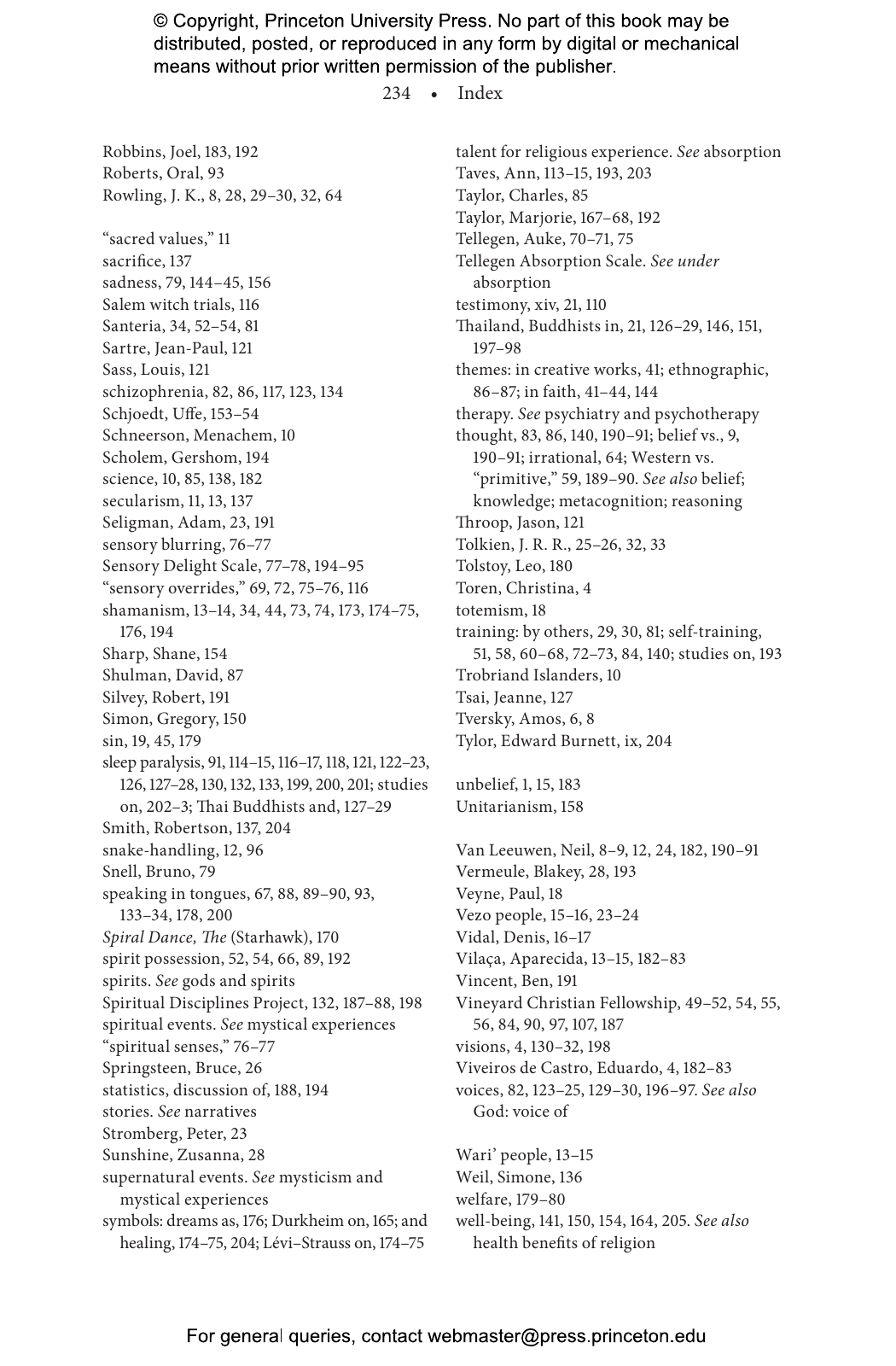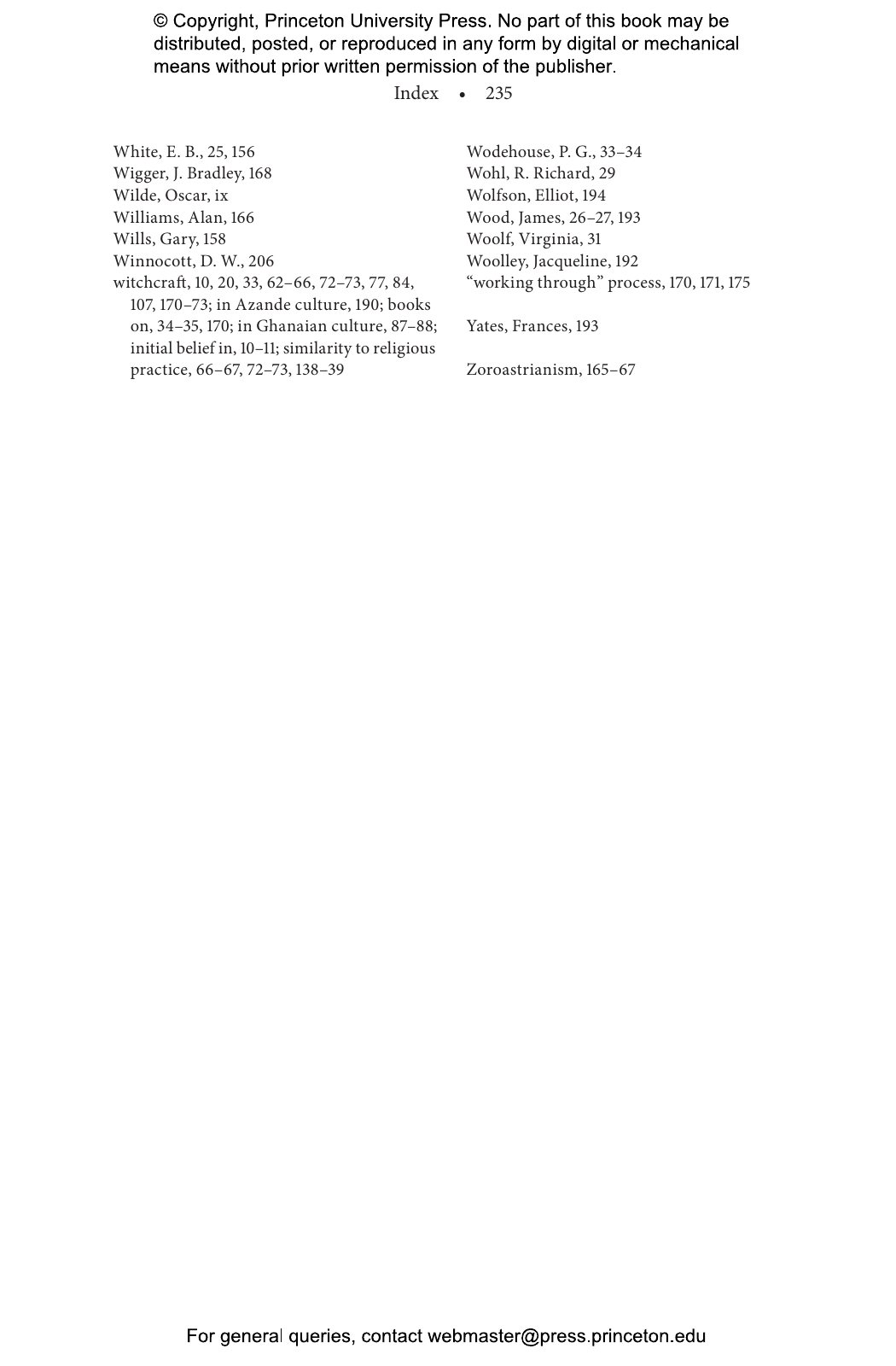How do gods and spirits come to feel vividly real to people—as if they were standing right next to them? Humans tend to see supernatural agents everywhere, as the cognitive science of religion has shown. But it isn’t easy to maintain a sense that there are invisible spirits who care about you. In How God Becomes Real, acclaimed anthropologist and scholar of religion T. M. Luhrmann argues that people must work incredibly hard to make gods real and that this effort—by changing the people who do it and giving them the benefits they seek from invisible others—helps to explain the enduring power of faith.
Drawing on ethnographic studies of evangelical Christians, pagans, magicians, Zoroastrians, Black Catholics, Santeria initiates, and newly orthodox Jews, Luhrmann notes that none of these people behave as if gods and spirits are simply there. Rather, these worshippers make strenuous efforts to create a world in which invisible others matter and can become intensely present and real. The faithful accomplish this through detailed stories, absorption, the cultivation of inner senses, belief in a porous mind, strong sensory experiences, prayer, and other practices. Along the way, Luhrmann shows why faith is harder than belief, why prayer is a metacognitive activity like therapy, why becoming religious is like getting engrossed in a book, and much more.
A fascinating account of why religious practices are more powerful than religious beliefs, How God Becomes Real suggests that faith is resilient not because it provides intuitions about gods and spirits—but because it changes the faithful in profound ways.
Awards and Recognition
- Winner of the PROSE Award in Theology & Religious Studies, Association of American Publishers
- One of The New York Times' Three Books That Gaze Upward to Heaven and Inward to the Heart
- Winner of the J.I Staley Prize, School for Advanced Research
"Fascinating. . . . Provocatively orchestrated, meticulously argued, and lucidly written."—Sarah Iles Johnston, Los Angeles Review of Books
"Luhrmann has brilliantly illuminated the magical attunement that constitutes a great deal of evangelical charismatic belief."—James Wood, New Yorker
"Drawing voraciously on her own and others’ research into faiths as far-flung as Messianic Judaism, the Goddess movement, Indigenous spirituality and Santeria, Luhrmann seeks to map how modern believers make their gods real."—Ariel Sabar, New York Times
"Brilliant . . . destined to become a classic."—Timothy Larsen, Marginalia
"A serious work of anthropological research, yet its conversational tone and fascinating anecdotes will hold the attention of even nonspecialists, especially those troubled by the elusiveness of an intimate relationship with God."—America Magazine
"An immensely enjoyable read."—Journal of the American Academy of Religion
"A generous and erudite study of how people believe."—Kirkus Reviews
"Tanya Marie Luhrmann is brave to have written such a daring book but it is a book which needed writing, it is a subject which needed addressing, and—amazingly I think—in the process of writing, she has given us a challenging, thought-provoking work. . . . What we have in the end is a fascinating and accessible book, taking us far out of our comfort zones to discover how what we do, and how what people in different cultures to our own do, can enable each person to grow in awareness of the invisible other, how each one of us can make the invisible other real."—Luke Penkett, Heythrop Journal
"This insightful, challenging study, to be commended for its richly researched scholarship, throws fascinating light on how people fasion and express their faith practice and experience."—Rev. Brian Cooper, The Gandhi Way
"A cause for celebration."—Brian Collins, Religious Studies Review
"N/A"—Marie Masagutova, Antropologicheskij Forum
“T. M. Luhrmann has a rare gift and this book is a rare achievement—beautifully accessible, intellectually humble, genuinely objective.”—Mark Noll, author of A History of Christianity in the United States and Canada
"This is a brave, subtle book. Luhrmann draws on her rich career of fieldwork in a range of religious communities around the world to reveal the basic scaffolding of spiritual experience—the combination of habits, practices, relationships, sensations, and stories that enable humans to experience God as real. She delves into the differences across faiths and cultures while also offering a bold, persuasive case for all we share in common."—Molly Worthen, author of Apostles of Reason: The Crisis of Authority in American Evangelicalism
“How God Becomes Real is bold, thought-provoking, and very accessible.”—Amira Mittermaier, author of Giving to God: Islamic Charity in Revolutionary Times
“This is a brilliant book that tackles an issue of great importance: How do our minds apprehend religion, how do we work to fashion our religious ideas and emotions, and how does that work change us? How God Becomes Real is profound—and also a great read.”—Pascal Boyer, author of Religion Explained: The Evolutionary Origins of Religious Thought


